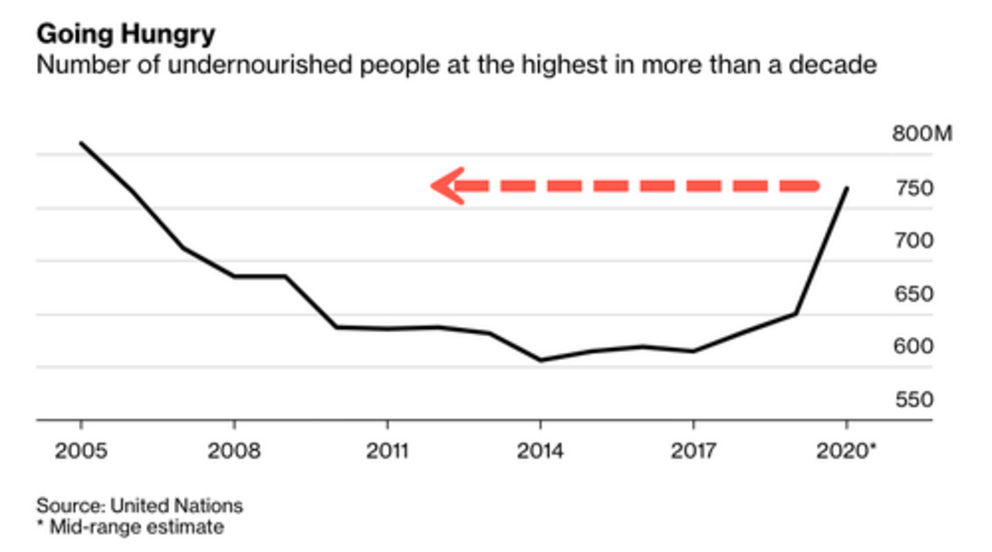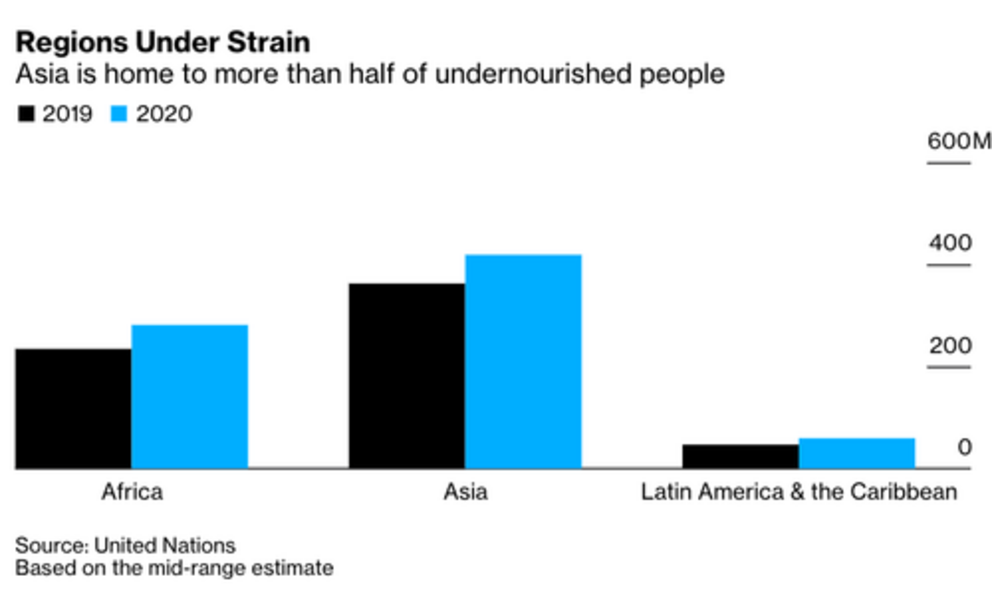Pandemic-driven hunger hits 15-year high as global crisis unfolds
The State of Food Security and Nutrition in the World 2021 (SOFI 2021) report warns food insecurity and malnutrition have hit 15-year highs and are likely to worsen.
Well before the COVID-19 pandemic, the world was on track to minimize hunger and malnutrition by 2030. But the virus pandemic disrupted economic flows around the globe, unleashing supply chain hell, compounded by disruptive weather, along with overstimulation by central banks and governments, helping to induce inflation, which has put the world at a critical juncture.
A staggering 811 million people went hungry in 2020, or about 10% of the entire world population. The decade ending in 2014 saw the number of undernourished people fall to 607 million and base through 2019 around 650 million. But as soon as the pandemic hit, food insecurity soared by more than 150 million people to 811 million.

"The report indicates that progress has been made for some forms of malnutrition, but the world is not on track to achieve any global nutrition targets by 2030," the report said.
Globally, 44 percent of infants under 6 months of age were exclusively breastfed in 2019 – up from 37 percent in 2012 but the practice varies considerably among regions. Child malnutrition still persists at an alarming rate –an estimated 149 million children were stunted, 45 million were wasted and 39 million were overweight in 2020. The report presents new projections of potential additional cases of child stunting and wasting due to COVID-19. Based on a conservative scenario, it is projected that an additional 22 million children in low- and middle-income countries will be stunted, an additional 40 million will be wasted between 2020 and 2030 due to the pandemic. -SOFI
"This is a wake-up call to the entire world," David Beasley, executive director of the World Food Programme, told an audience of a webcast Monday.
Beasley said: "We're heading in the wrong direction. To think that we're going to end hunger by 2030, that's not even possible given the direction, trajectory we're on now."
None of this should come as a surprise to readers as the Food and Agriculture Organization of the United Nations (FAO) global food price index recently hit a new high. The non-governmental organization warned surging food prices may induce a "potential crisis" in lower-income countries: "Rising food imports as a share of all imports can be an early warning indicator for potential crises in some areas."
As a reminder, ahead of the rapid rise in food prices, SocGen's market skeptic Albert Edwards in December shared his thoughts about why he started to panic about soaring food prices. And since then, food supply chains remain broken, trillions in fiscal stimulus spent, and exploding commodity costs, we can only imagine the situation is getting worse by the month.
More recently, Deutsche Bank's Jim Reid reminds us that emerging markets are more vulnerable to food insecurity since their consumers spend a far greater share of their income on food than those in the developed world.
Other highlights from the SOFI report show Asia is home to most of the undernourished people post-COVID.

Analysts Michael Every and Michael Magdovitz of Rabobank warn that surging food prices could exacerbate global food insecurity.
Pandemic-driven hunger may already trigger social unrest as destabilization erupts in impoverished countries such as Haiti, Cuba, and South Africa.

